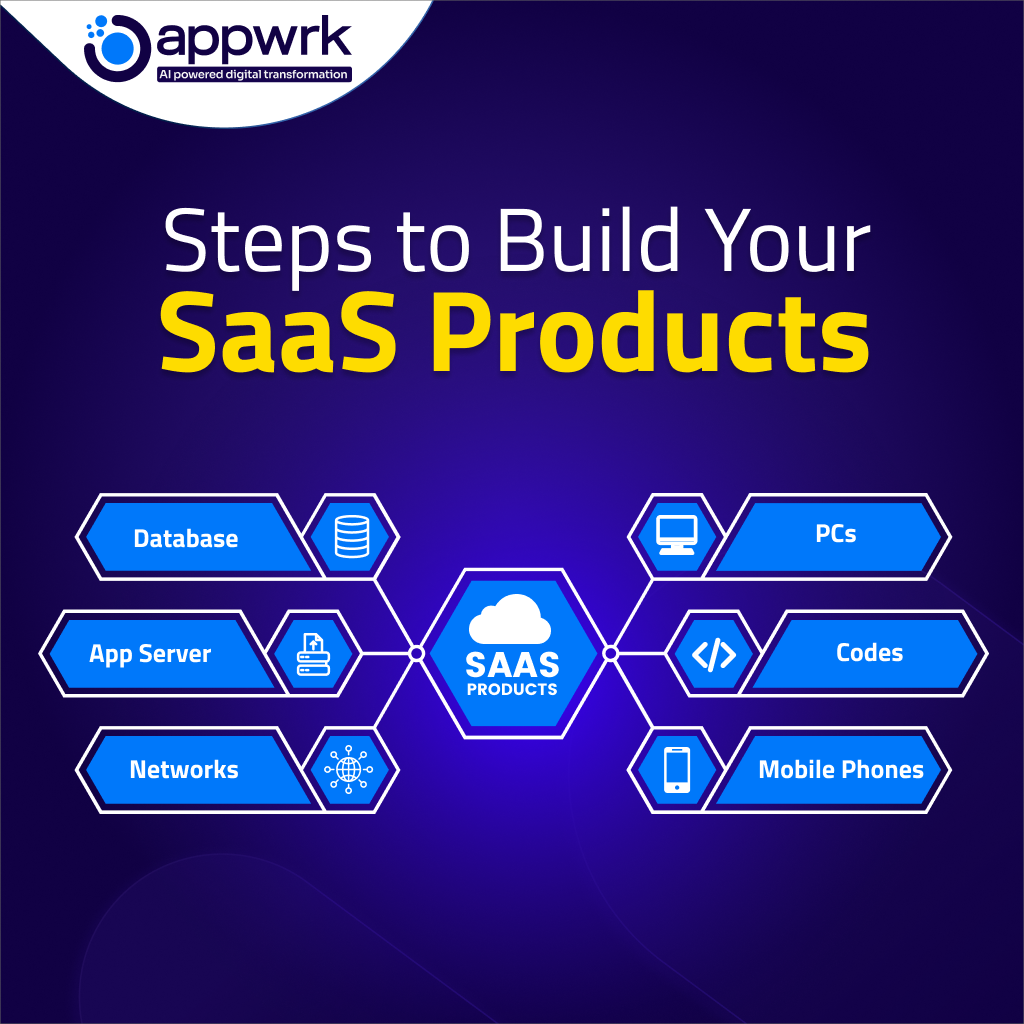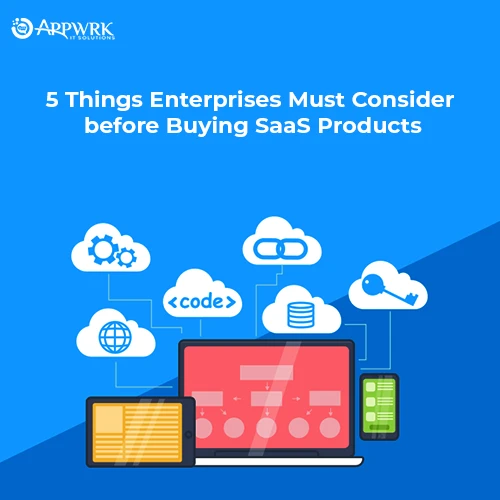SaaS: Software as a Service its Benefits, Challenges and Working Model
Gone are the days of unmanageable software installations and costly updates. Today, businesses are turning to Software as a Service (SaaS) for a more efficient, scalable, and cost-effective solution. But what exactly is SaaS, and how is it transforming the software industry?
In the technical world, SaaS stands for Software as a Service which is part of Cloud Computing. It is a cloud-based software delivery model that helps users to operate applications online. Let‘s have a detailed understanding of SaaS (software as a service), its benefits, challenges, and how it works.
Table of contents
What is SaaS ? ( Software as a Service )
SaaS, or Software as a Service, is a cloud-based software delivery model where applications are hosted by a service provider and made available to customers over the internet. Unlike traditional software, which requires physical installation on individual devices, SaaS can be accessed from any device with an internet connection.
In other words, SaaS is a way to deliver software applications over the Internet. It allows users to access the software on different web browsers like Firefox, Google, Brave, and Bing. Which basically means that you don’t need to install it on your computer.
SaaS is hosted and managed by cloud providers or vendors. It is centrally managed, and updated, by Cloud providers or ISV (Independent Software Vendors). They use SaaS products to deliver software solutions to customers over the web browser.
Trending Examples of SaaS application in different industries are Clockdiary, Trello, Slack, Zoom, and Netflix.
SaaS – Software as a Service is one of the major models under cloud computing. Let’s explore other cloud computing service models i.e. IaaS, PaaS, and RaaS.
Types of Service Models on Cloud Computing
Cloud computing is a broader section for computing resources and services over the web browser. It offers many service models that ease users’ daily lives by enabling them to use software/ applications on the internet without installing or purchasing them. There are 4 major cloud computing service models: SaaS, IaaS, PaaS, and Raas.
- SaaS (Software as a Service): It is a software distribution model where applications are hosted over the servers by either the independent vendor or the cloud provider. Popular examples include Microsoft 365, Google Workspace (G Suite), and Clockdiary.
- PaaS (Platform as a Service): It offers a platform that allows customers to develop, manage, and run applications without dealing with the infrastructure associated with the applications. Famous examples of PaaS include Google App Engine and Heroku.
- IaaS (Infrastructure as a Service): It offers cloud computing resources like virtual machines, networks, and storage over the internet for developers to build the infrastructure of their applications. Prominent examples of IaaS include Azure, Google Cloud Platform, and Amazon Web Services (AWS).
- RaaS (Robotics as a Service): It helps developers integrate robotic technology into cloud computing., providing a way to use robots and automation. Popular examples of RaaS include Fetch Robotics, Invia Robotics, and Locus Robotics.
SaaS, IaaS, PaaS, and RaaS are the major subsets of Cloud Computing and work closely with each other to enhance user experience.

Working Principle of the SaaS Model
SaaS is a software service model where cloud providers help Independent Software Vendors (ISV) host their software over cloud servers, databases, and computing resources. Software as a Service chain starts with cloud providers who manage the cloud server, databases, and resources.
ISV or third-party service providers like APPWRK IT Solutions use remote servers offered by providers to host their SaaS products and make them accessible to everyone with compatible devices on the internet. This gives leverage to startups and companies using SaaS products or SaaS services to reduce dependency on on-premises software.
Application Service Provider (ASP) and On-Demand Computing are closely related to the SaaS delivery model where vendors host customers’ software and make it accessible around the globe. The customer is provided network-based access to a single copy of an application in On-Demand Computing. The source code remains the same for all the customers, only new features and functionalities are added and made accessible according to the SLA (Service Level Agreement).
Multi-Tenancy
Software as a Service is defined as the design and structure of software applications delivered over the web browser. Software as a Service uses a multi-tenancy approach where SaaS applications run over the host server at one point in time, and at the same time software is accessible to all the subscribing customers or cloud tenants.

Benefits of Software as a Service
SaaS products remove customer dependency on the on-premises software which requires installation and licensing. It helps to grow your business and there are many SaaS service providers. Software as a Service enhances business growth by increasing customer reach. Here is a feature that SaaS products offer:
1. Cost Efficiency with SaaS:
One of the primary benefits of SaaS is its cost efficiency. With SaaS, businesses can save on the high upfront costs associated with traditional software purchases. Instead, they pay a subscription fee, which can be monthly or annually. This subscription model also includes maintenance and updates, reducing the need for in-house IT support.
Global Reach: It works on the cloud server which helps it to increase customer reach and anyone around the globe can access SaaS products with compatible devices on the internet.
Automatic Update and Maintenance: SaaS providers handle all the updates, bug-fixing, patches, and general maintenance, ensuring the software is always updated. This reduces the burden on users for updating the software.
2. SaaS – Scalability and Flexibility
SaaS solutions are highly scalable, allowing businesses to easily adjust their usage based on their needs. Whether you’re a small startup or a large enterprise, SaaS can grow with you. This flexibility ensures that you only pay for what you use, making it an ideal choice for businesses of all sizes.
Integration: It can easily integrate robust API solutions and built-in enhancements with tools that allow developers to make seamless data flow.
3. Accessibility with SaaS
Since SaaS applications are hosted in the cloud, they can be accessed from anywhere, at any time. This is particularly beneficial for businesses with remote teams or those that operate in multiple locations. Employees can work from anywhere, using any device with internet access, ensuring continuity and productivity.

Challenges Involved in SaaS
Software as a service has a few challenges that limit, its scalability and usage. Businesses rely on third-party vendors for their software, updates, maintenance, and smooth running. A few risks associated with Software as a Service are:
1. Security and Privacy Concerns with SaaS
Security is a major concern for businesses considering SaaS solutions. Since data is stored offsite, there is always a risk of data breaches. However, reputable SaaS providers implement robust security measures, including encryption, regular security audits, and compliance with industry standards, to protect customer data.
2. Integration and Compatibility Issues
Integrating SaaS applications with existing systems can sometimes be challenging. Compatibility issues may arise, especially if a business relies on legacy systems. It’s crucial to choose SaaS solutions that offer seamless integration capabilities and work well with your existing software infrastructure.
3. Internet Dependence for SaaS Servers
Since SaaS applications are accessed online, a reliable internet connection is essential. Any disruption in internet service can impact access to the software. Businesses must ensure they have a stable and high-speed internet connection to avoid downtime.
4. Difficulty in Switching Service Provider
Dependence on the specific provider’s platform will make switching vendors difficult. This is called Vendor Lock-in where the transfer of data to the new software as a service platform becomes a problem for users.
How SaaS Providers are Changing the Game with AI ?
Innovative SaaS providers are continuously evolving their offerings to meet the changing needs of businesses. They are leveraging advanced technologies like artificial intelligence (AI), machine learning (ML), and automation to enhance the functionality and performance of their software solutions.
AI and ML Integration
By integrating AI and ML, SaaS providers are able to offer advanced analytics, personalized user experiences, and intelligent automation. These technologies help businesses gain deeper insights, improve decision-making, and increase operational efficiency.
Enhanced Customer Support
SaaS providers are also focusing on improving customer support by offering 24/7 assistance, comprehensive knowledge bases, and community forums. This ensures that customers can get help whenever they need it, reducing downtime and improving user satisfaction.
Regular Updates and Innovations
One of the standout features of SaaS is the regular updates and continuous innovation. SaaS providers frequently release new features and enhancements, ensuring that customers always have access to the latest technology without the need for manual upgrades.
Get Started with APPWRK’s AI-Powered SaaS Solutions
At APPWRK, we are dedicated to transforming your business with our cutting-edge AI-powered SaaS solutions. Our expert team of developers is here to guide you through every step, from initial concept to deployment and ongoing support.
Why Choose APPWRK?
- Expert Team: Our skilled developers bring extensive experience in creating robust SaaS solutions tailored to your business needs.
- AI Integration: Leverage advanced AI and ML technologies to gain deeper insights, improve decision-making, and enhance operational efficiency.
- 24/7 Support: Enjoy round-the-clock assistance with our comprehensive customer support, ensuring minimal downtime and maximum satisfaction.
- Continuous Innovation: Stay ahead of the curve with our regular updates and innovative features, keeping your business at the forefront of technology.
Transform Your Business Today!
Don’t miss out on the opportunity to revolutionize your operations with our reliable and innovative SaaS products.
Contact us now to discuss your project and discover how APPWRK can help you achieve your business goals with our state-of-the-art AI-powered SaaS solutions.

FAQs
Ans: Software as a service applications help users improve efficiency by offering unique advantages over traditional software. It helps enhance efficiency in several ways:
Accessibility
Reduced Downtime
Scalability
Cost efficiency
Automation and Integration
Ans: A SaaS company like APPWRK IT Solutions can play a significant role in scaling your business by providing a SaaS solution customized for you. APPWRK can help in numerous ways:
Cost Reduction and Flexibility in Subscription
Scalability
Enhanced Efficiency and Productivity
Improved Communications
Ans: Multi-tenancy in Software as a Service is an architecture model where a single instance of the SaaS product serves multiple customers. It isolates every tenant’s data and remains invisible to other tenants. Key Features of this infrastructure:
Shared resources
Data Isolation
Scalability
Cost efficiency
Ans: Steps of building SaaS Products:
Idea and Market Research
Planning and Requirement
Design
Development
Testing
Deployment
Maintenance and Monitoring
Scaling and Optimizations
Customer Support
Ans: The difference between Software as a Service and the cloud is quite clear:
Software as a Service software is delivered over the Internet whereas the cloud is a broad range of services (CaaS, PaaS, and IaaS) delivered over the Internet.
Software as a Service provides ready-to-use software solutions whereas the cloud offers infrastructure, services, and platforms for software building.
Software as a service is for end users and businesses while the cloud caters to a broad section like developers, IT professionals, and businesses.
Cloud providers manage SaaS products whereas users and cloud providers handle the cloud.
About The Author






















































